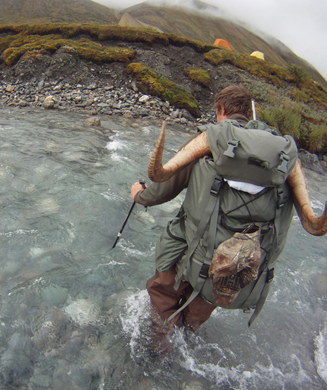We may earn revenue from the products available on this page and participate in affiliate programs. Learn More ›
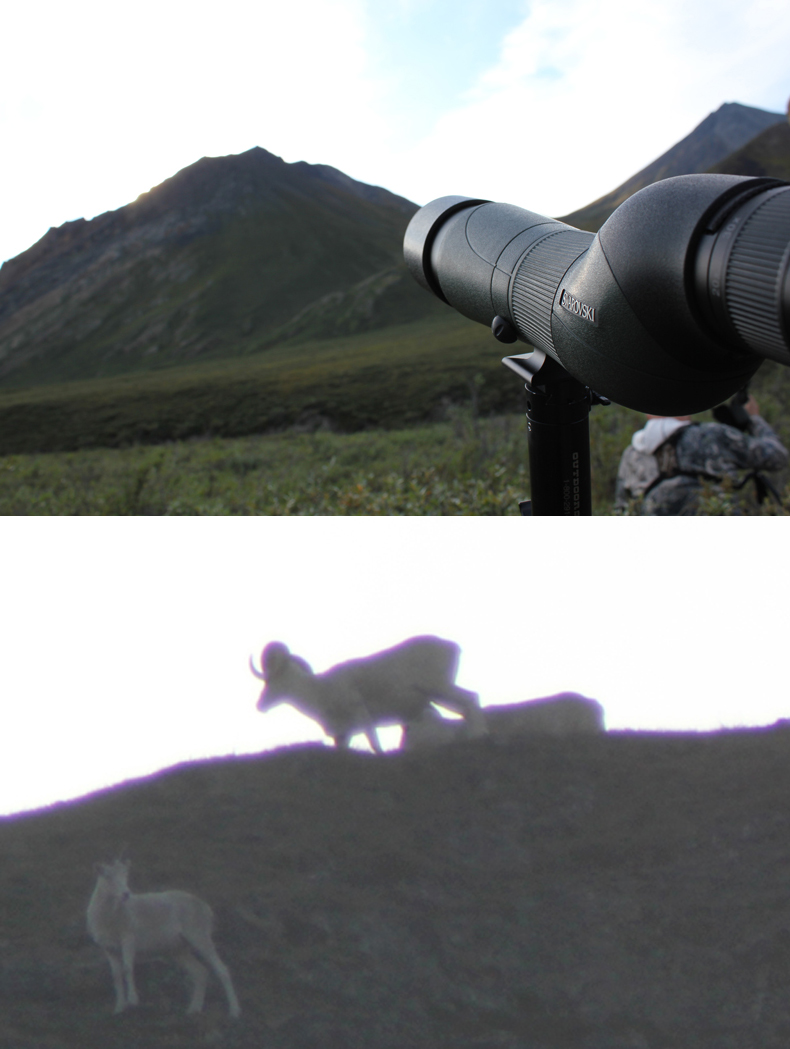
My passion is sheep hunting, and without a quality spotter, you might as well not even leave home. Swarovski's 65mm HD 20-60X spotter is probably the best one I've ever used. It's incredibly clear and allows you to see details at 40X that lesser scopes don't reveal at 60X. Also, this scope doesn't strain your eyes and gives you hours behind the glass without giving you a headache. See the ram in the picture below? He's more than a mile away and I shot this photo through the spotter. Read more about the Swarovski HD spotting scope here.
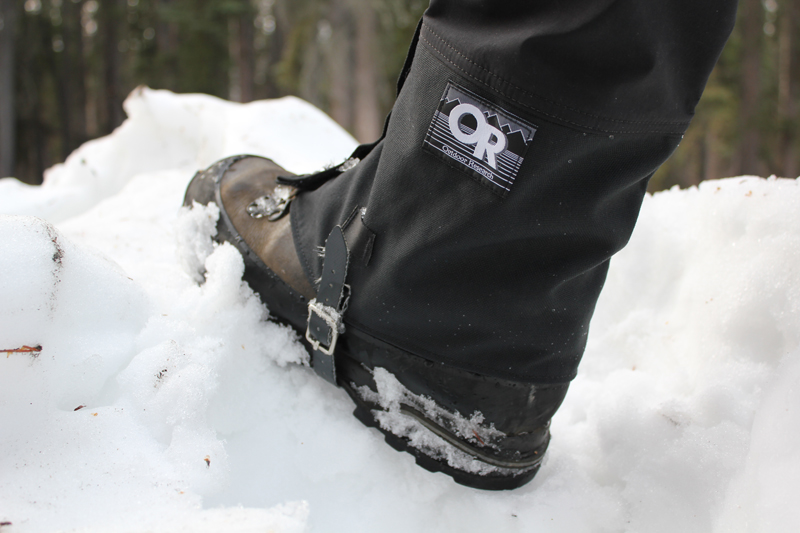
I hadn't really gotten on the gaiter bandwagon before last year, but now I'm a convert. I started using them on my sheep hunt in August, and now there aren't many hunts I will go on without them. I really like both the Kennetrek and Outdoor Research gaiters, as they fit me well and most importantly, their boot straps are super durable. Many gaiters I have seen have elastic cords or similar straps for holding the gaiter tight down to the boot. But, a lot of these straps will quickly cut on sharp rocks. Not only are gaiters great for keeping rocks and debris out of your boots, but they keep your pant legs from getting muddy and torn while trekking across wet, brushy country. I've found them to be just as useful in the winter, worn underneath my overalls. They keep snow out of my boots and keep my laces from getting iced over while I'm out trapping.
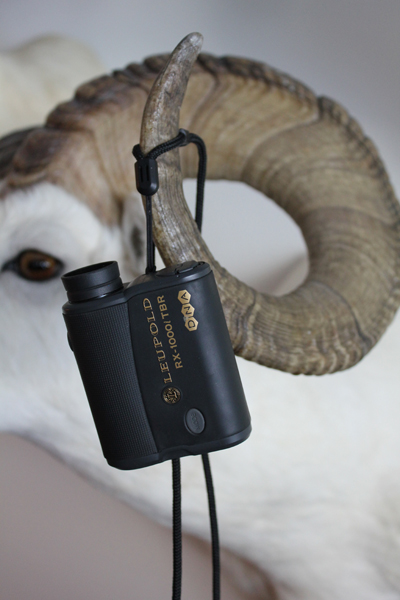
It can be hard to judge range in Alaska where open country and angled shots are the norm. The thing I like about the Leupold DNA rangefinder is that it accounts for shot angle. While hunting sheep or goats, shots are rarely flat. In some terrain, a straight shot rangefinder may range a ram at 600 yards, which is usually farther than I'd like to shoot. But taking shot angle into account, the bullet will drop like a 450-yard shot, which I am very comfortable taking. The rangefinder is also very light and compact and gives readings out to 1,000 yards, and can be programmed to give drop estimations for bows, or one of several trajectory classes of rifle calibers.
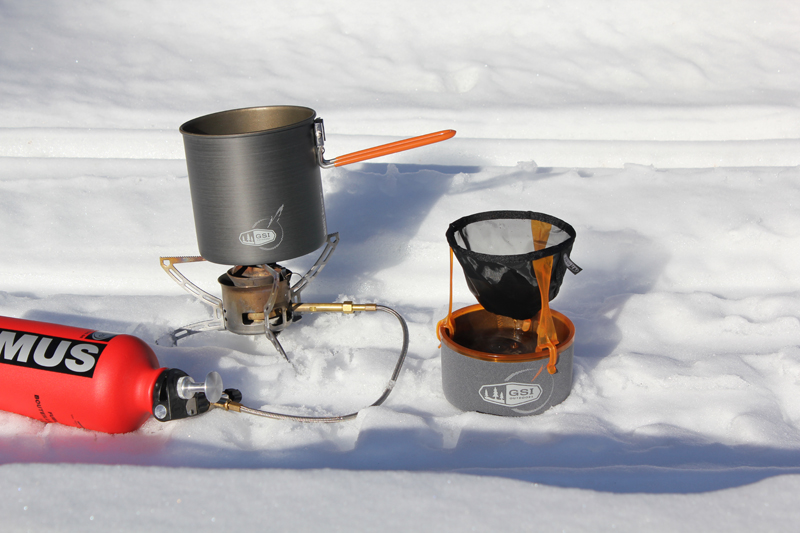
Hunting the mountains for sheep and goats requires cutting as much weight as possible, and gear weight is a critical factor on many fly-in trips. In the past, I would carry an aluminum tea pot and a steel cup and spoon for my cookware, but I was recently turned on to some of GSI Outdoors's lightweight products. My new setup is their Pinnacle Soloist cookware set. It consists of an ultralight boiling pot, insulated plastic bowl/cup, and folding spork. They all fit conveniently inside the pot for transport as well as what may be the most important piece, GSI's ultralight java drip. It's a coffee filter that clips on the cup. I just pour boiling water through the filter and have a hot cup of joe in no time! All of this put together weighs about the same as the steel cup I lugged around for so many years.
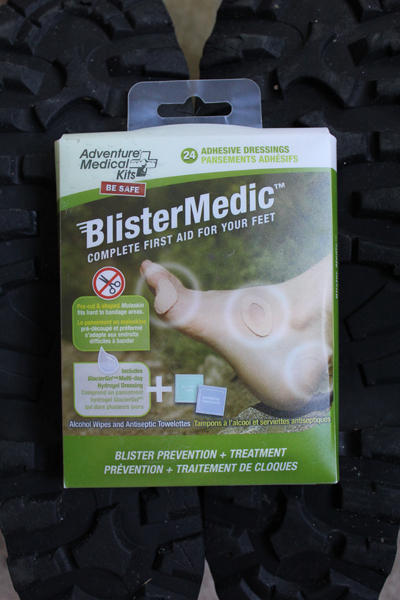
Anyone who has ever hunted sheep, or any other mountain critter for that matter, probably knows firsthand that blisters can ruin a hunt faster than just about anything. I never EVER go on a hunt without one or two of these blister kits. Adventure medical makes them, and they are conveniently packaged so that you can get by with just about anything short of a hole in your foot.
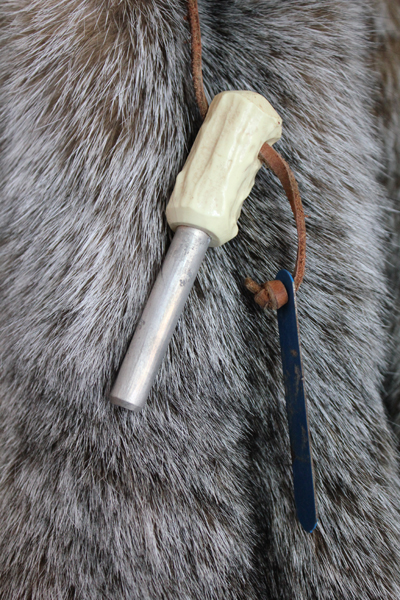
Being able to start a fire quickly could mean the difference between life and death. There are probably a million gizmos and methods out there, and everyone has their favorite, but mine is the simple magnesium rod/flint striker. I carry this one around my neck on just about all of my hunts. With a little practice, and any reasonably dry fuel, this thing can get a fire going in any weather condition.
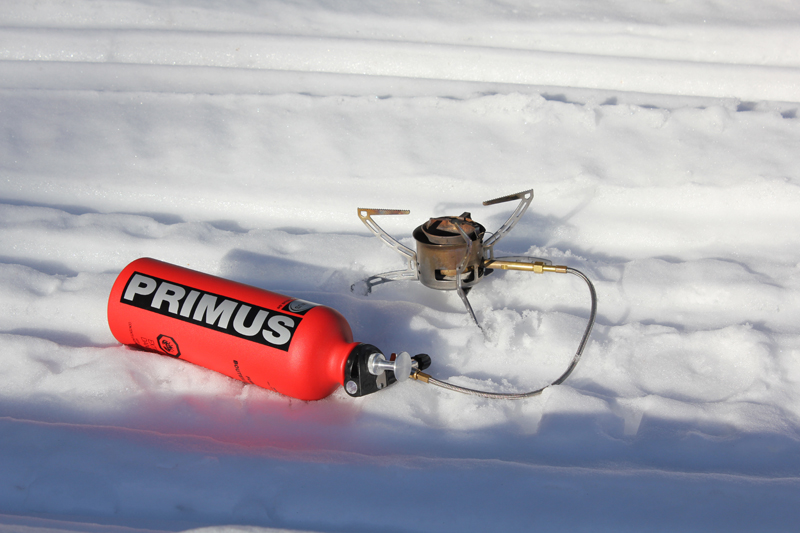
A backpack hunter's stove is his life line in many ways. A guy may be able to choke down cold, freeze-dried food well enough to get by, but at the end of a long, wet, cold day, having something hot to eat, drink, or rinse off with can really keep a guy in the game mentally. I like the primus multifuel ex stove. On some hunts, I can simply bring compressed gas canisters which work great. However, on some hunts, I can't fly with compressed gas. With a simple switch of jets, I can use white gas, kerosene, gasoline, or diesel fuel.
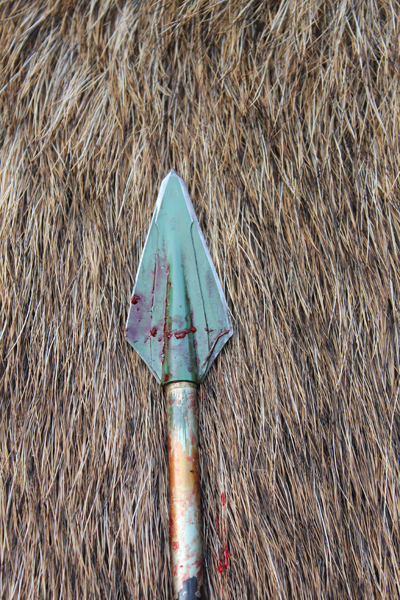
There are so many fancy and wicked looking broadheads coming out every year that it's hard to keep track. While Zwickeys may not have the space-age look that some of the new broadheads do, they are tried, true and deadly. I shoot a traditional bow, and because I use a helical fletching which spins the arrow, two bladed broadheads get much better penetration than the three- or four-bladed models. You have to sharpen them yourself, but you can bevel sharpen them to cut in the direction your arrow is spinning, giving even better penetration. They are very tough, and actually weigh in more consistently than many machined broadheads I've tried. Last year my dad killed a large black bear with them, and he also shot a moose through the heart at 63 yards. Even more impressive, my buddy Luke Randall guided a hunter who killed the number 8 Pope & Young brown bear with one shot. These broadheads were on the end of his arrows and he described them with one word: BAD (the good kind of bad).
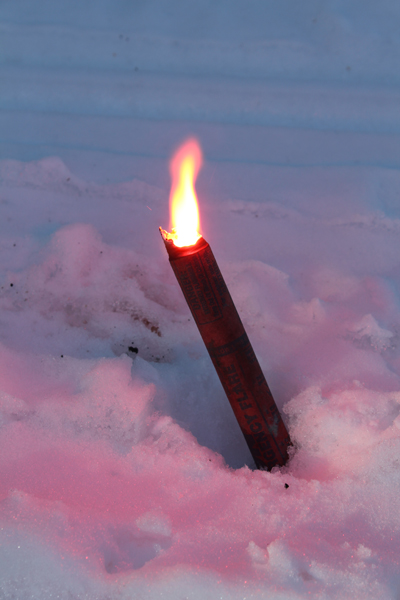
This may be a little strange, but bear with me. On many of my trips, I'll pack road flares in my truck, boat, or snowmachine. They're cheap and readily available. Not only are they great for signaling in an emergency, but if you find yourself soaking wet and freezing, just pop one of these and toss it in a pile of wood, even wet wood, and you will have a raging fire in no time. A few years ago a road flare saved my hide. I was on the trapline and my snowmachine broke down in -30 degree weather. It took a few hours to fix and to keep from freezing to death, I started a fire with a road flare.
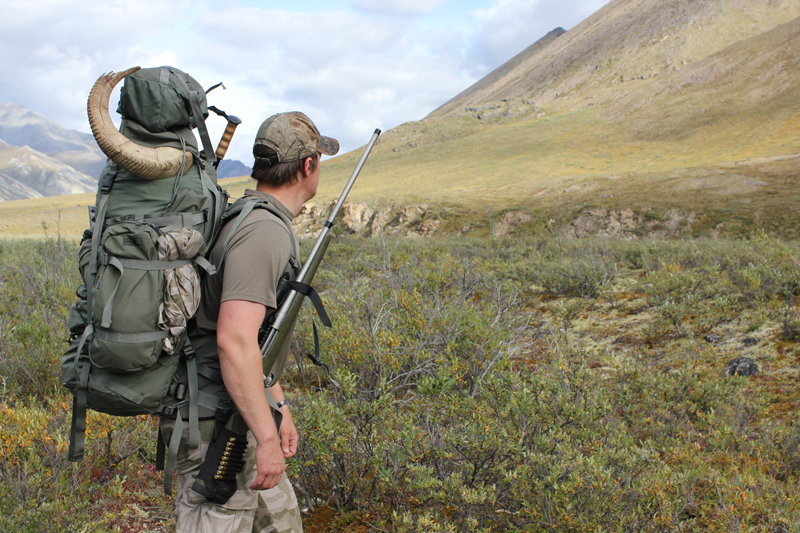
I was always a diehard frame pack guy, learning firsthand how much weight and space capacity a good sheep pack requires. But last year I got turned on to Kifaru and their new Timberline pack. I'm not looking back. It's by far the most comfortable pack I've ever worn, and with a few add-ons, I have all the room I could ask for and then some. It actually supports a heavy load of meat and gear better than the frame pack I was so in love with. In my humble opinion, it is probably the best backcountry hunting pack ever made.
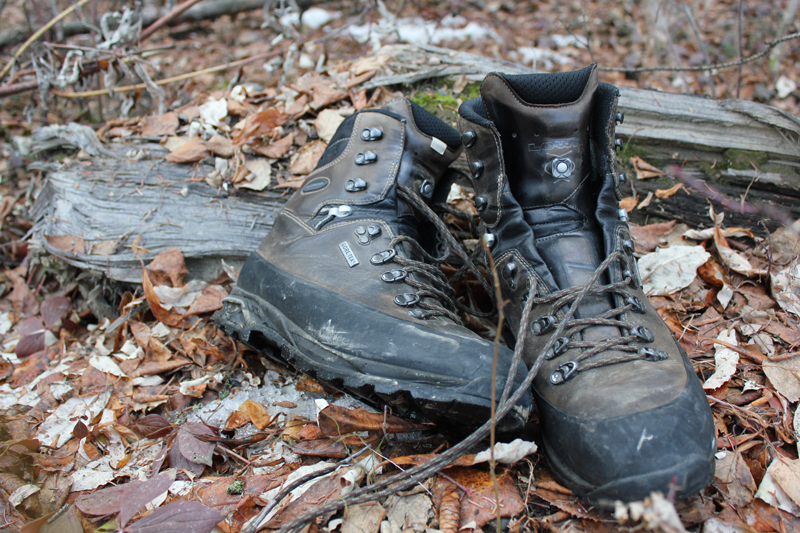
After sheep hunting for several years, I've climbed my fair share of mountains and worn out several pairs of boots. This year I got a pair of Lowa's Tibet hunting boots. They give the support and ruggedness needed for climbing the steep, rocky slopes that sheep inhabit, as well as the comfort needed for walking long miles of river bottom with an overloaded pack. This year, I also took them to the next level (or elevation), harvesting a mountain goat on Kodiak Island. After both sheep and goat hunts, I was pleasantly surprised to see that they had very little tread wear at all. Many boots won't hold up for one hunt, and even the good ones I used before would have the tread almost completely worn off after two hunts. They are definitely my new favorite, and I have plenty of miles left to put on them.
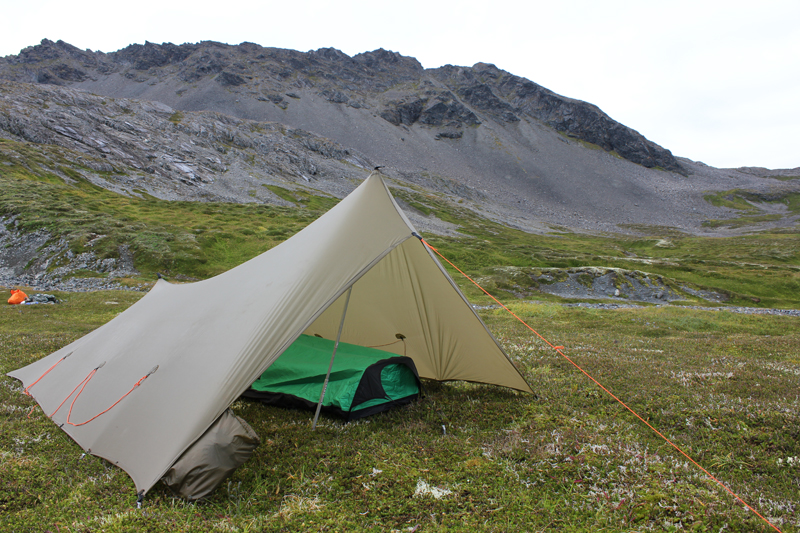
I've used quite a few different tents and shelters, but nothing compares to the Supertarp. It's an extra lightweight shelter that can be put up by staking out the sides and using 2 poles (designed to work with trekking poles or cut wood poles). It can be used as a backup shelter for unexpected nights on the mountain or as a primary shelter. Last year I pitched my one man bivy underneath it for a double layer of protection, and had room to spare for all my gear. If you pitch it into the wind, it will stand up to anything short of a hurricane. This year I'm considering using just the supertarp for my shelter on my sheep hunt to save a couple pounds.
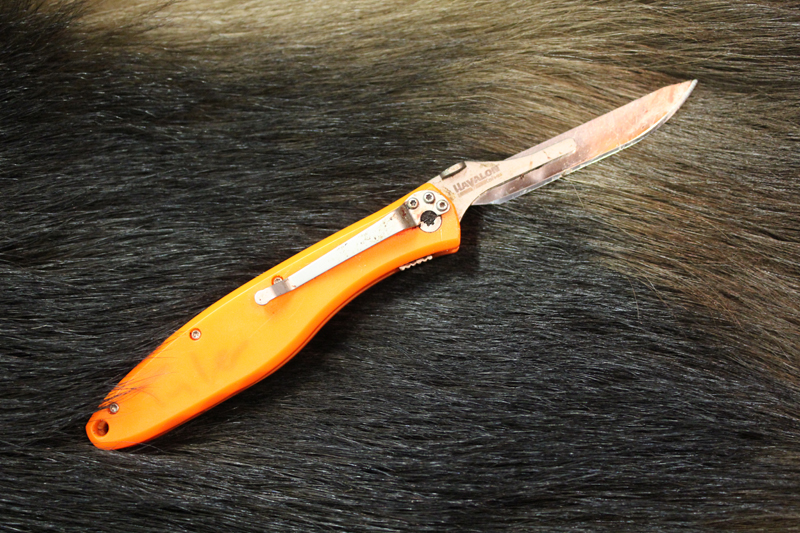
I first used one of these knives back in 2009. My buddy had this interesting piece of work and let me cape my sheep with it. I couldn't believe how fast and precise it made the usually painfully long process. Caping is pretty straight foreward, but skinning around antlers, and especially sheep horns can be slow and tricky. The thin, easily replaceable, glorified scalpel blades are great for skinning in even the tightest places. I prefer to use a regular knife for skinning thin hides such as fox and marten that easily cut, but I used this knife to skin deer, wolves, and even a wolverine this winter.
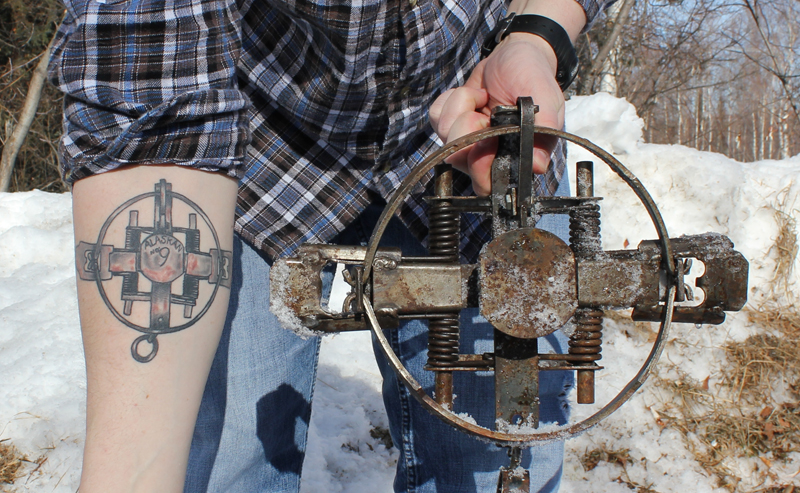
One piece of gear that you probably have never seen (unless you live in Alaska) is the Alaskan No. 9 wolf trap. Also known as the Manning No. 9, this trap was designed by Fairbanks trapper and machinist Ned Manning. They are still hand made here in Fairbanks, and are part of virtually every serious Alaskan wolf trapper's arsenal. As my tatoo might suggest, I'm a big fan of them too. They have a 9-inch jaw spread and are built specifically to work in Alaska's tough trapping conditions and hold the biggest wolves. A mature wolf can exert a force of 800 pounds or more, which can break lesser traps. Every detail of the Alaskan No. 9 has been designed and built to eliminate weaknesses, and I know from experience (you do NOT want to get your hand caught in one of these).
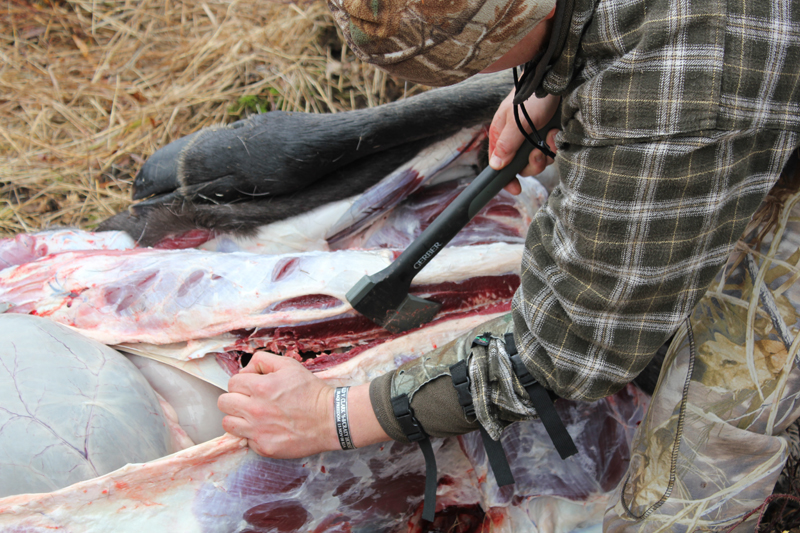
There's a lot of gear I use, but I don't use many items all year long, except for this camp axe. Whether it's cutting limbs to hang tree stands for black bears, chopping firewood, or cutting marten poles on the trapline, Gerber's camp axe is an irreplaceable tool. Last fall, I actually called a bull moose into camp with it by chopping firewood. After my dad took him down, the axe proved handy for splitting the bull's sternum.
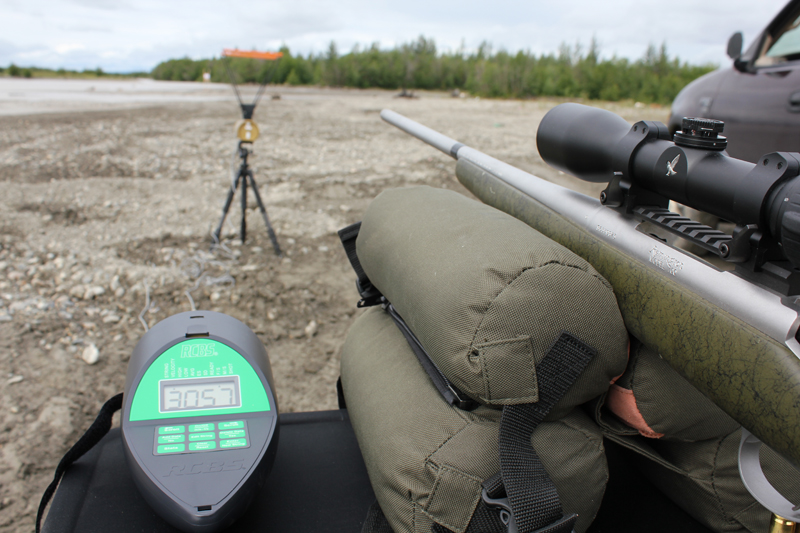
I hand load almost all of my hunting ammunition, and one of the keys to load development is accurately measuring velocity. The RCBS ammomaster is a chronograph that's affordable and easy to use. With ballistic turrets and long range shooting turning into the hottest hunting trend since camouflage, chronographs are more important than ever. In order to understand the ballistics of my hand loads, I have to know the velocity, simple as that. This chronograph also works with bows.
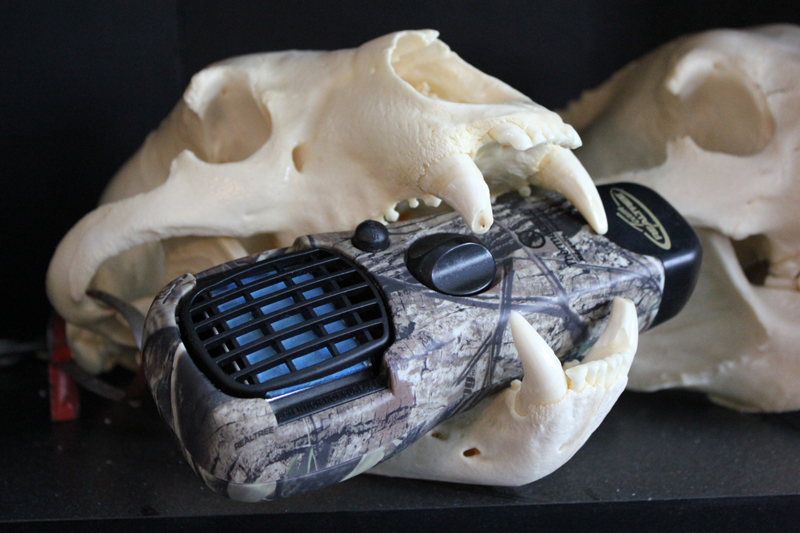
Thermacells have been around for a few years now, but I was always skeptical of them. Here in Alaska we grow mosquitoes in biblical proportions and the bloodsuckers are the worst during spring black bear baiting. Normal attire for this work usually includes bug nets, duct taped pant legs, and bug dope, but even with all this gear you still can hardly hear anything through the roar of 1,000 sparrow-sized skeeters buzzing around your head. I got a few thermacells last spring and I am 100 percent sold. They work off a butane cartridge that heats up a replaceable repellent pad. I set the Thermacell between my feet on the tree stand and within 10 minutes there were no bugs in sight! It was definitely no fluke, as I used them all season long, and never had to wear a head net.
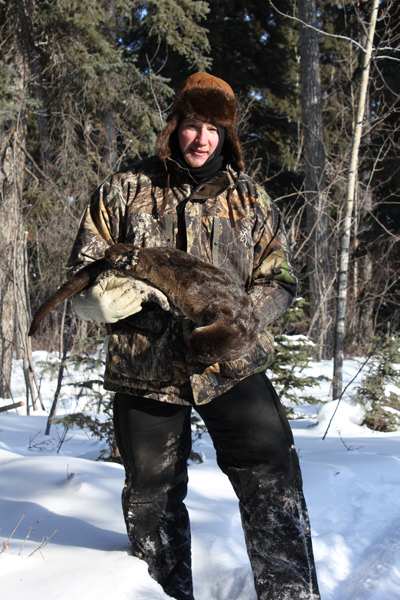
This is a fashion statement in Alaska. Between November and April, I spend quite a bit of time out trapping, often at temperatures colder than your average deep freezer. I had this hat made out of an otter I shot down on Afognak Island a few years ago, and it is by far the warmest hat I've ever had. River otter have a short, thick, silky fur, and even -40 degrees can't beat this thing!
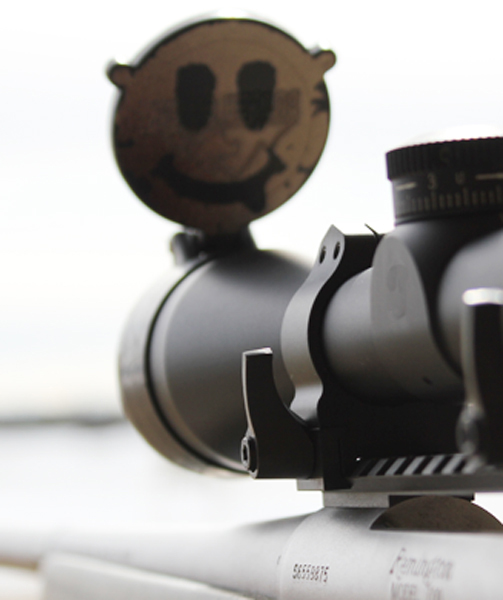
With every hunt, all of the effort, money, and gear boils down to one moment: the shot. As most of us know, if you don't have something to protect your riflescope, that shot can be spoiled pretty quickly. Many scopes come with cheap, removable scope covers/caps, but I've found them to be inconvenient and easily lost. I've used the Butler Creek flip up caps for the better part of 10 years now, and I have yet to find a better scope cap system.
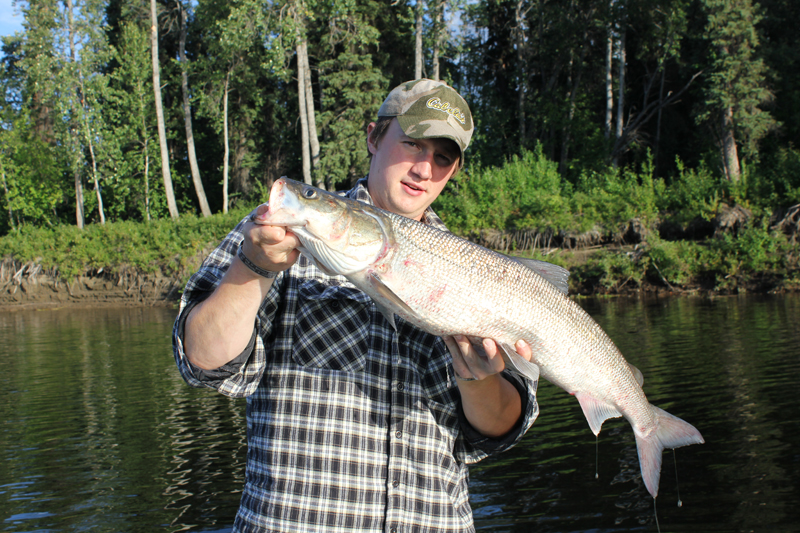
Most of us have had at least one life changing experience, an instant in time where something in your life is changed forever. For me, one of those moments was a haircut. A bad haircut. I never used to wear a ball cap all that much, but one day that all changed. I swung into the local cheapo cut mart, and came out bearing a striking resemblance to Lloyd Christmas. Not wanting to shave it and start over, I started wearing a cap … all the time. Wearing a ball cap in the field definitely helps keep the sun out of your face and the rain out of your eyes, but more than anything, I just like wearing ball caps.
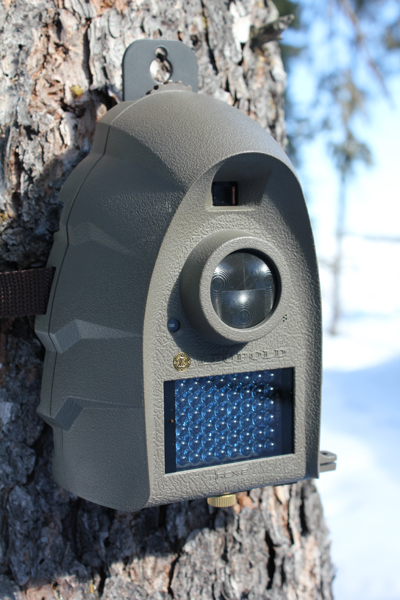
I primarily use trail cameras for patterning black bears on my bait stations. The problem with trail cameras is that Alaskan black bears have developed an appetite for them. About half of the trail cameras I have used have been completely destroyed bears. The cool thing about these RCX-1 and RCX-2 cameras from Leupold is you can adjust them for a farther trigger with a narrower field of view. They are also adjustable so that I can put them 7 or 8 feet up on a tree that's farther away, where the bears won't notice them. My favorite feature on the camera is that it has a separate remote with a screen that plugs into the camera, allowing you to view pictures in the field from multiple different cameras.
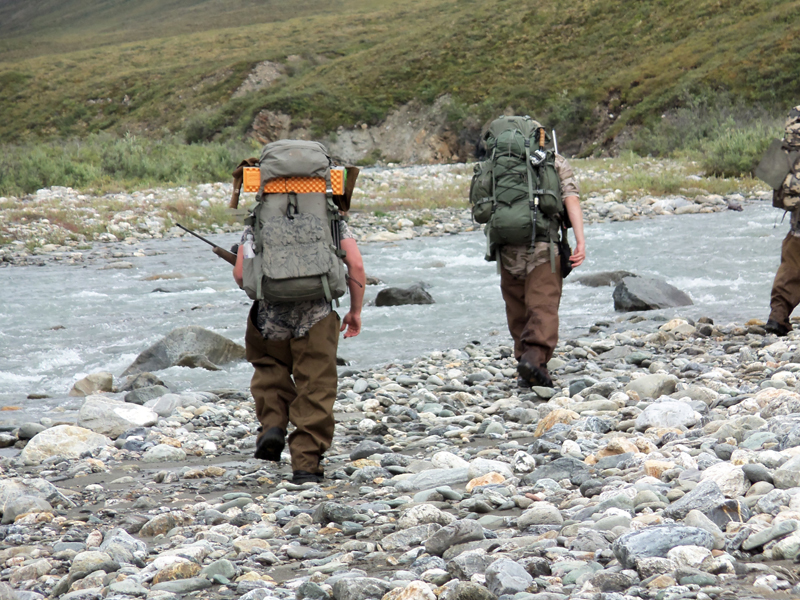
I first heard about these back in 2010, about two weeks before I went on my solo sheep hunt. I ordered a pair right away, as I knew I would have to cross several creeks. Sheep hunting often requires fording knee deep creeks, and it's not worth packing the extra weight of a pair of rubber hip boots. But crossings take a long time. To keep your boots and clothes dry, you have to strip down to your skivys, and bare foot it across sharp rocks through ice cold water. Neos waders eliminate this hassle. They are made of a tough, lined nylon, with vibram soles, and much lighter and more packable than rubber or neoprene waders. The cool thing is that they slip on and fit over your boots. They look like something for a lunar expedition, but they work great, and cut down stream crossings to a few minutes, as opposed to half an hour. I'll be hard pressed to go sheep hunting without them.
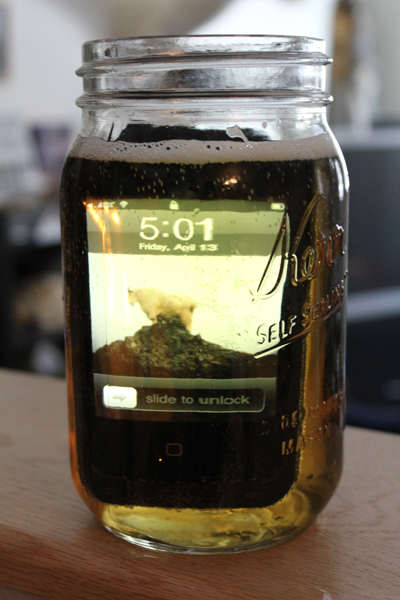
If you've jumped on the iPhone band wagon like me, and spend a lot of time in the woods, chances are the iPhone you have in your pocket is not your first one. I don't even want to begin to speculate as to how many of these phones have been smashed, dropped, or drowned in the wilderness. I recently found these cases made by Lifeproof, and I think now my phone stands a chance. They are very tough, but slim and don't impede use of the touchscreen as some cases do. They are also waterproof (or beer proof as this picture shows) to 6 feet! One of my favorite features is that it doesn't stick in my pocket! For a little insurance on an expensive phone that I use all the time, this is a must.
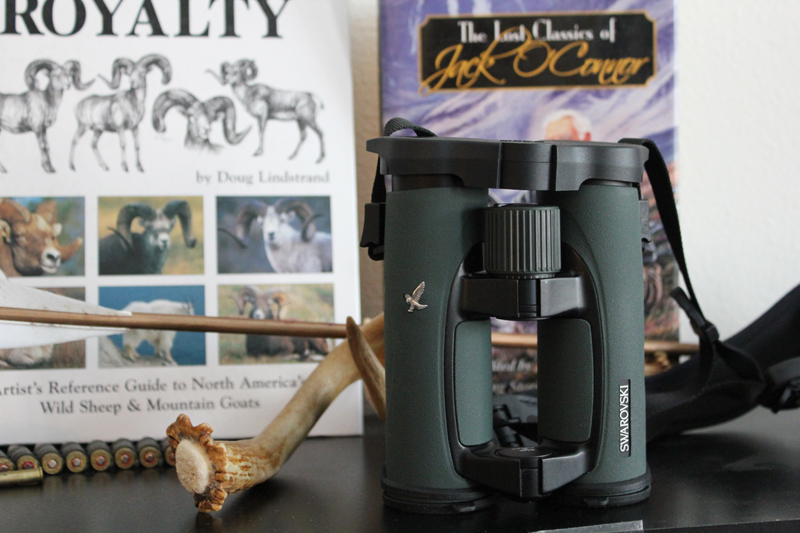
Good binos are an absolute necessity for the kind of hunting I do, and Swarovski's EL Swarovision line is hard to beat. The 12 x 50's are fantastic for long hours of low-light glassing for moose and bears, while these 10 x 32's are perfect for backpack hunts for sheep where weight is everything. Quality optics are an important investment for any serious hunter, and you can't go wrong with these.
In Alaska, good gear can not only mean the difference between a successful hunt and an unpunched tag, it can mean the difference between life and death. Live Hunt host Tyler Freel highlights his favorite mountain gear.
